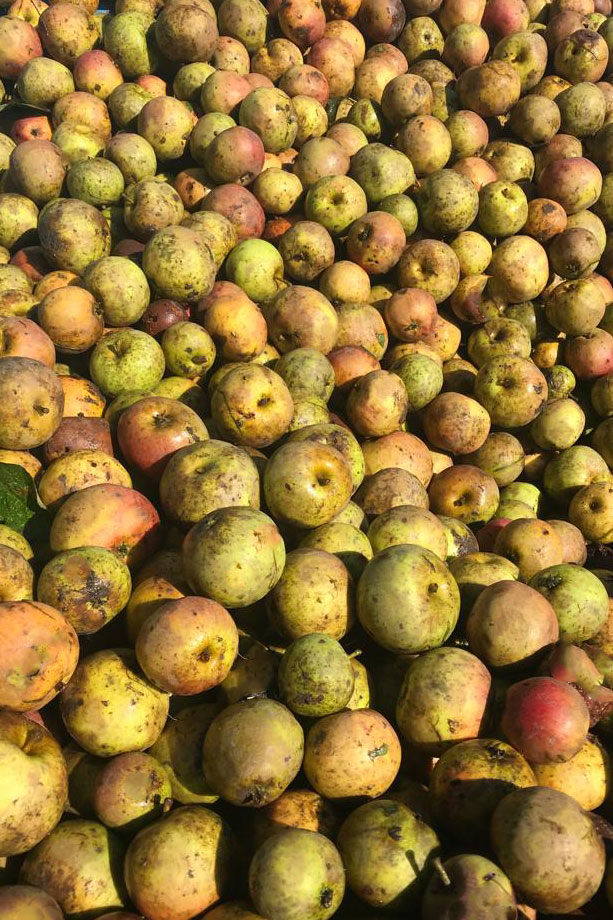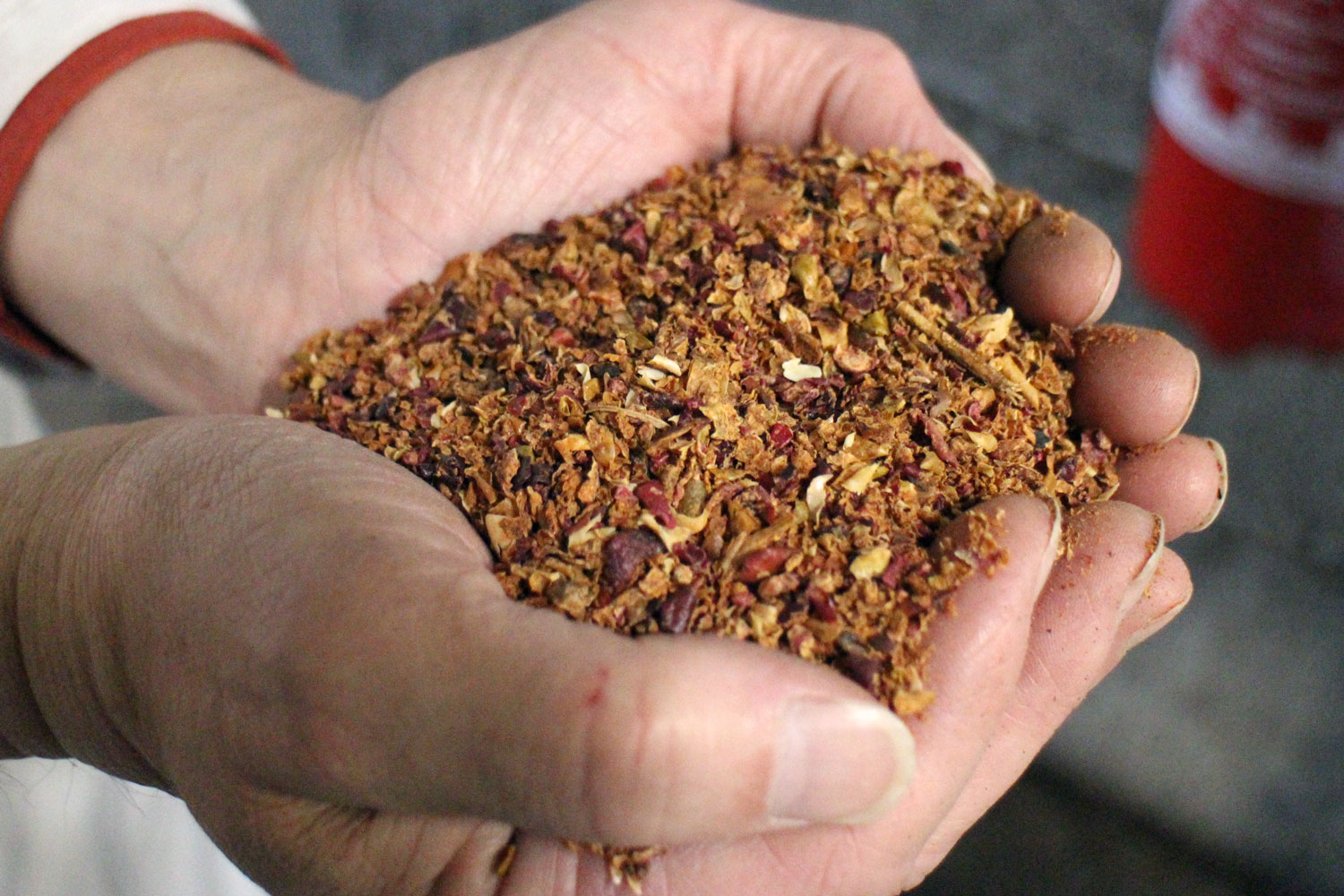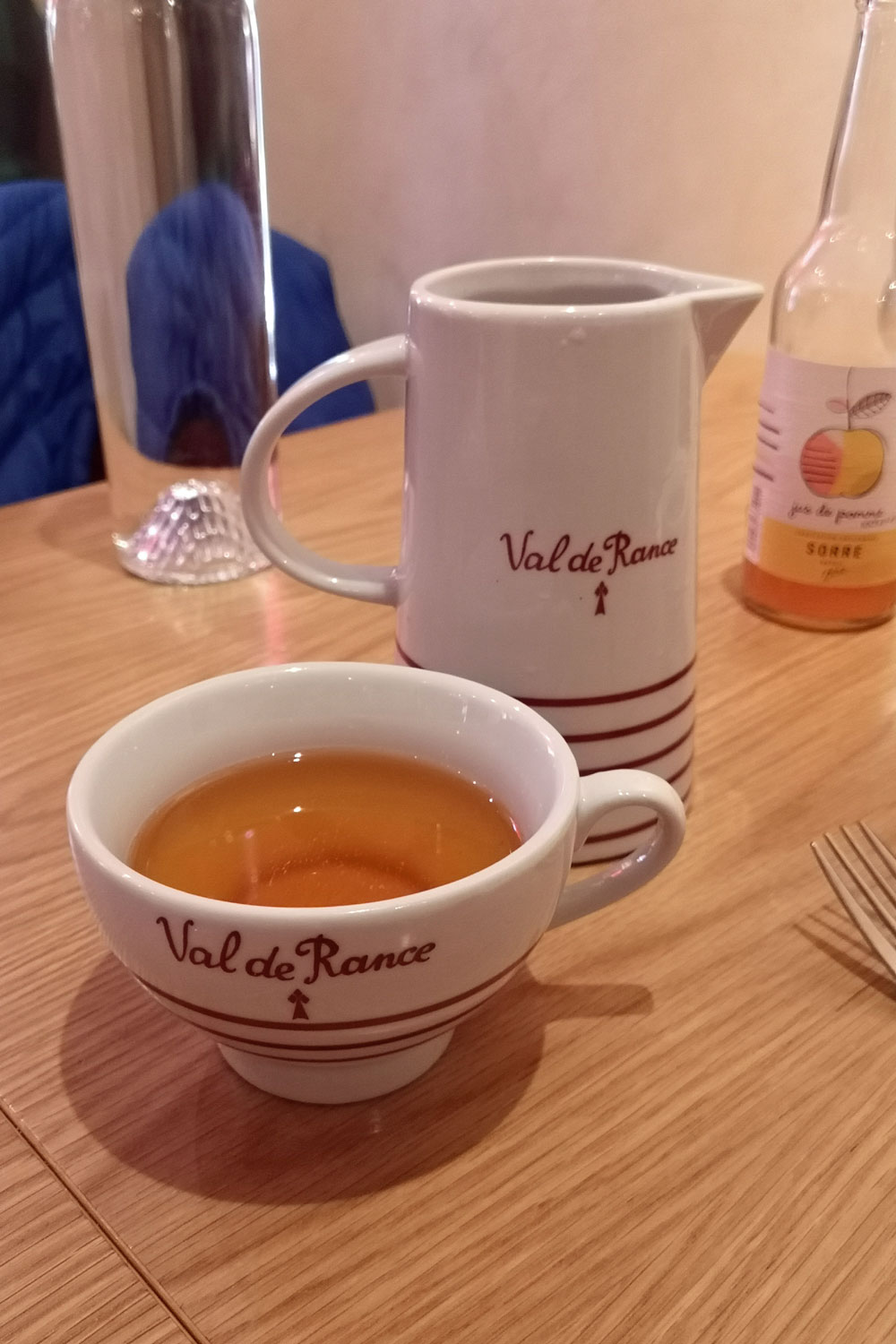This is a translation of my German blogpost Hinter den Beauty-Kulissen… ProTec Ingredia Proudly Presents: Beauty-Upcycling mit Äpfeln. Enjoy!
In cooperation with ProTec Ingredia // Following in the footsteps of Codif’s new cosmetic active Regetaste in Brittany, France: I am standing at the mouth of the river Rance as it joins the sea. Up until a few decades ago, barges transported apples and cidre (French apple cider) from this estuary to the nearby city of Saint-Malo.
I’ve been travelling on a similar route as you can read in last month’s Beauty Soap chapter. We started by visiting an organic apple farmer and learning about the old apple variant ‘Marie Ménard’. The special combination of ingredients in this apple and its bitter taste is not just essential in Breton cidre: It also makes Marie Ménard a highly interesting raw ingredient for the cosmetics industry.
The next step in my journey: Visiting the regional cooperative that manufactures the apple cider. The apple press residue at the cider mill contains many precious plant ingredients for the new cosmetic ingredient Regetaste. Join me now to find out more about this sustainable beauty upcycling project…
Upcycling with apples
A few years ago, Romuald Vallée (CEO of cosmetic ingredients manufacturer Codif) met Jean-François Lorée from the apple cider mill ‘Val de Rance’. This cooperative of Breton apple farmers has been manufacturing cider since the 1950s. Jean-François isn’t just the cidre and apple expert at Val de Rance but he also handles the further use of the by-products left over from the apple and cider manufacturing process. Essentially, upcycling is his job! The remaining fruit pomace, apple peels, stems and seeds usually go into the production of pectin or animal foods. However, some parts of the apple – like the peels around the apple seeds – still have a lot of unused potential so Jean-François began looking for new ways to utilise this plant material.
In the cider mill of the cooperative
At the cider mill, Jean-François is giving me a tour of the premises and telling me more about the cooperative of apple farmers. Val de Rance works with around 2,000 regional apple farmers who typically run smaller apple orchards. The old apple variant Marie Ménard – which was selected by Codif for its unique ingredients – only grows on around 15 of these apple farms.
From September to December, the cider mill is running at full speed because this is the season that the ripe apples are turned into cider and apple juice. After the farmers have delivered the apples, any coarse dirt is removed from the fruit (the apples are not scrubbed as the yeast fragments on the surface of the peels are essential for the fermentation process). In the next step, the apples are chopped into small pieces. Two large hydraulic presses then press the fruit pulp for around two hours. Before natural fermentation sets in, the juice is filtered.
Over forty different types of apples are combined to create the characteristic taste of Breton cidre. Each apple variant has a different taste profile since the combination of plant compounds – like the amount of polyphenols – varies widely from apple to apple. Once the pomace left over from the apple pressing is dried it is ready to be turned into a cosmetic ingredient.
From apple pomace to the cosmetic ingredient
For its new ingredient Regetaste, Codif exclusively uses the dried pomace of the apple variant Marie Ménard. The pomace is first extracted with a water-based blend, then purified and further concentrated to achieve the perfect ratio of polyphenols and apple acid. Polyphenols belong to the group of bitter substances which is why Marie Ménard apples taste mostly bitter. Like other plants, these bitter compounds are part of the fruit‘s natural protection mechanism against pathogens or parasites.
Some bitter substances have a positive effect on human health which is why they are
currently trending in the food and nutritional supplements industries. When ingesting these compounds, the tongue perceives the taste as bitter. However, our tongue is not the only body part that can detect bitter substances: A few years ago, scientific research found out that our organs and skin also contain bitter taste receptors.
With the help of an innovative skin model (a tissue culture based on human skin cells), Codif was able to prove the effects of bitter taste receptors on the activity of the skin cells: These receptors play an important role in cellular ageing (a process which is called senescence). A senescent skin cell causes inflammation processes and oxidative damage in the skin. That is also the reason why an ageing epidermis (the outer-most skin layer) typically has a damaged skin barrier which results in a rough texture and sallow skin tone.
And this is where Codif’s active ingredient Regetaste steps in: The bitter substances contained in the complex reactivate the bitter taste receptors in the skin. The body then reacts by refilling the calcium deposit within the cells and reducing the senescence of keratinocytes and fibroblasts. Regetaste stimulates the cellular activity of the skin, strengthens the skin’s barrier function and boosts the skin’s natural peeling process. The skin looks smoother, fresher and more even-toned (Codif calls this the “new skin effect”).
A complex ingredient development process
Now I’m sitting in a traditional Breton Crêperie. It’s almost the end of my Brittany trip and I’m drinking a cup of cidre whilst thinking about the development process of Regetaste. Producing a cosmetic active from a specific apple requires so many different steps: Without the new scientific research about the skin’s bitter taste receptors; without organic apple farmers or upcycling in the apple cider mill, Regetaste would not exist. I’m already looking forward to trying out a beauty product formulated with this exciting new ingredient!
© Photo No. 4 was provided by Codif for this article.
The ingredients from Codif are available to trade customers through the German distributor ProTec Ingredia.
The next chapter of my beauty series will be all about plant-based ingredients and stress. Stay tuned!







